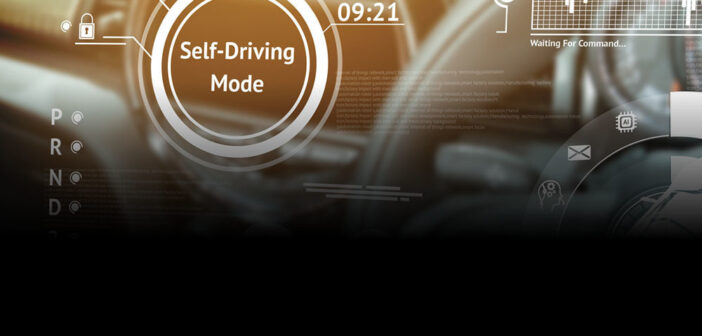BY AUTUMN CAFIERO GIUSTI

Big Data is giving fleet managers the ability to make their drivers and vehicles safer and more efficient than ever before.
As construction continues to move further and further away from its long-standing existence as a low-tech industry, Big Data in the form of telematics in-vehicle measurement technology is revolutionizing the way companies manage their fleets.
Forecasts predict that by the year 2022, the global market for vehicle telematics is expected to reach about $103 billion, doubling from an estimated $55 billion in 2018.
Research shows that 30 to 40 percent of all commercial and government vehicles are equipped with telematics. Those numbers are expected to reach the 50 percent mark in the next few years.
The construction industry stands to benefit significantly from this trend, as fleet managers are challenged to find ways to streamline logistics, improve driver safety and lower their fuel and maintenance costs.
TELEMATICS 101
“Telematics” combines the words “telecommunication” and “informatics.”
The term “telematics” came about in the late 1970s as the computer age was getting underway, and it refers to the transfer of information over telecommunication.
In using telematics, construction joins the ranks of a host of industries that are benefiting from the technology.
In fleet management, telematics technology enables construction companies to track their vehicles and drivers’ habits in real time.
Here’s how it works: Telematics devices plug into the vehicle’s onboard diagnostic port and use GPS technology to track time and location information for the vehicle. The device gathers data on driver behaviors such as speed, braking and acceleration, and data on the vehicle such as distance driven and fuel levels. Estimates show that fuel is the second-largest fleet management expense, after payroll.
All of this information gets delivered to a user interface, such as a mobile app, that companies can use to monitor their fleets. Fleet managers can then use the analytics they gather to specify routes, maximize fuel efficiency, track work hours, and develop driver safety.
Annual accident rates for fleets have reached 20 percent or higher on average, according to Merchants Fleet Management. Companies can rely on telematics data to assess risk so they can adjust their insurance premiums and ultimately reduce accidents.
Businesses can expect to receive insurance discounts of 5 percent to 15 percent.
LEARNING BY EXAMPLE
Fleet managers in Texas can look to case studies in other markets for guidance on how to successfully implement telematics systems. One example is Tilcon Connecticut Inc. As one of its state’s largest construction firms, Tilcon needs to be able to manage the safety and efficiency of its 155-vehicle fleet to keep its jobsites running smoothly. The company provides crushed stone, hot-mix asphalt, and ready-mix concrete for infrastructure projects.
With the help of a plug-in device placed in each vehicle, Tilcon can track the location, speed, idle time, braking, and acceleration of every vehicle in its fleet. The data the device gathers helps the company promote safer driving habits and keep fuel usage in check.
“We have a great focus on vehicle safety and compliance,” said Michael Woodin, safety and health manager for Tilcon Connecticut. “We pride ourselves on employing safe drivers.”
Tilcon has been using telematics on and off for about four years. Last spring, the company started using a new telematics system that allows the company to more precisely track every vehicle in its fleet and monitor employee driving habits. Vehicles in the fleet range from small pickups to large, heavy-duty work trucks.
Tilcon saw results almost immediately. Between June (when the new program became fully operational) and October, Tilcon measured a 20 percent improvement overall in driver behavior.
Tilcon set a goal for its drivers to achieve a daily score of 85 or higher, based on a 100-point scale.
“We have many drivers achieving 100 on a daily basis, which is awesome,” Woodin said.
Tilcon drivers are also following the posted speed limits, which Woodin said could be considered unusual for drivers in most states. Tilcon has programmed its system to deduct points if a driver exceeds the speed limit by 8 mph.
“Even with this, our drivers have to contend with others who believe 15 or 20 mph over the speed limit is a normal, safe driving habit,” Woodin said.
Tilcon’s current telematics program is focusing on key performance indicators, which include distance driven, speeding of over 80 mph, speeding of 10 mph over the posted limit, hard braking, hard acceleration, and idle time.
A driver can lose 15 points for going 10 mph or greater over the posted speed limit, and 25 points for driving faster than 80 mph. A hard braking or hard acceleration event can cost a driver another 15 points.
“It’s very important to educate drivers on how to interpret their scores, and also that the system isn’t perfect,” Woodin said.
There are times when driver behaviors like hard braking can’t be avoided – such as when another vehicle is driving carelessly and endangering other vehicles.
“We can only control our own driving behavior,” Woodin said. “So if you bank good miles on the highway, you’ll reduce the negative effect of those types of incidents, which sometimes you can’t control.”
Idle time is reported but doesn’t count against the driver’s overall score. Although tracking idle time helps Tilcon with efficiency and cost savings, Woodin recognizes that some drivers, such as drivers of trucks that are equipped with strobe lights, need to keep their vehicles on to do their jobs.
“We can look at our list and idle time numbers and know who the exceptions are,” Woodin said.
The telematics devices Tilcon uses gathers data based on every 100 miles traveled to provide a fair measure of overall driving performance. The system calculates “good points” and “bad points” and determines a driver’s final score by subtracting the bad points from the good points, and then dividing that number by the good points.
When drivers are transferred to another vehicle, the fleet manager needs to update the system in a timely manner so the information produced will accurately reflect their scores.
HEALTHY COMPETITION AMONG DRIVERS
Tilcon has incorporated its safety recognition program into the telematics tracking process. Tilcon generates detailed weekly reports on each driver and posts the reports for everyone to see.
“It’s a fundamentally important part of our process to focus on drivers who are doing well and thank them for their good driving habits,” Woodin said.
The system provides an app that employees can use to monitor their progress and the overall progress of their team, and also compare their score to other drivers’ scores.
“It’s created a healthy competition between drivers for top scores,” Woodin said. The data helps drivers improve their habits, and enables managers and supervisors to help them achieve those goals.
“We need to encourage them and support the process to get better,” Woodin said.
Woodin cautions that telematics systems are useful only if fleet managers analyze the data the systems provide, and use the data to regularly provide feedback to their drivers.
“You need to constantly communicate performance results with your drivers through positive coaching,” he said. “If it’s important to you, it will be important to all.”
That feedback also needs to be positive and timely, Woodin said. Discipline for poor driving should only be used as a secondary measure, with the primary focus on safe driving habits and results.
FUTURE OF FLEET MANAGEMENT
In addition to measuring basic driver behavior, telematics can provide data that can inform fleet managers’ decisions in a range of areas, including when a vehicle might need maintenance, how much to pay operators, or how long a specific task might take on future projects.
Woodin believes Tilcon has only begun to unlock the potential of its telematics fleet management system. In addition to monitoring things like speeding and braking, the telematics system has a host of other capabilities that Woodin is still exploring. The system can track whether the driver is wearing a seatbelt and gather pre-trip data, among other analytics.
“There are so many things the system can do, and it’s been quite an education for me to try to learn all of them,” he said.
Some construction companies have also begun using telematics to monitor heavy equipment. The industry has been adopting standards that make the use of telematics more feasible and streamlined for heavy equipment operators.
Tilcon has outfitted all of its larger, over-the-road vehicles with telematics. That includes commercial vehicles such as tri-axle, low-bed, ready-mix, and fuel trucks. Tilcon plans to upgrade the telematics system on those vehicles to improve reporting with daily vehicle inspection reports and electronic daily logs, both of which are required by federal law and are still being performed manually.
“YOU NEED TO CONSTANTLY COMMUNICATE PERFORMANCE RESULTS WITH YOUR DRIVERS THROUGH POSITIVE COACHING. IF IT’S IMPORTANT TO YOU, IT WILL BE IMPORTANT TO ALL.”
One key benefit of telematics is that drivers may become strongly focused on their behind-the-wheel performance and strive to do well in the monitoring process.
“They consistently pay attention to speed limits, acceleration and braking, which makes them a safer driver, and us a safer company,” Woodin said.





